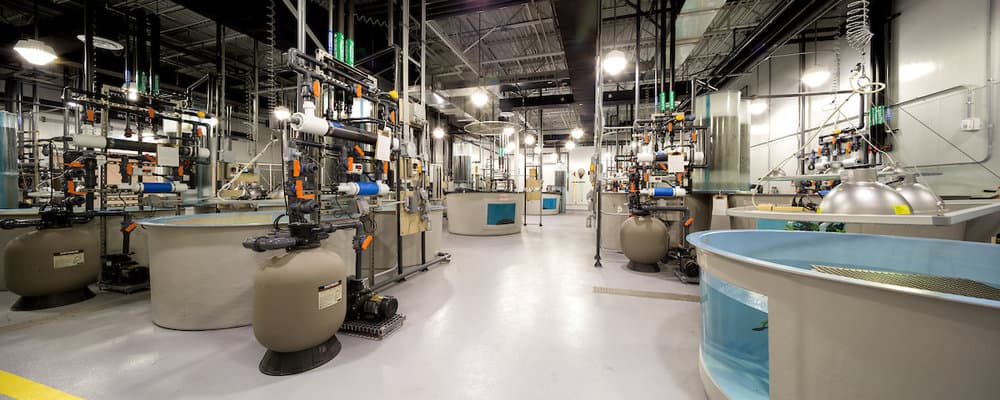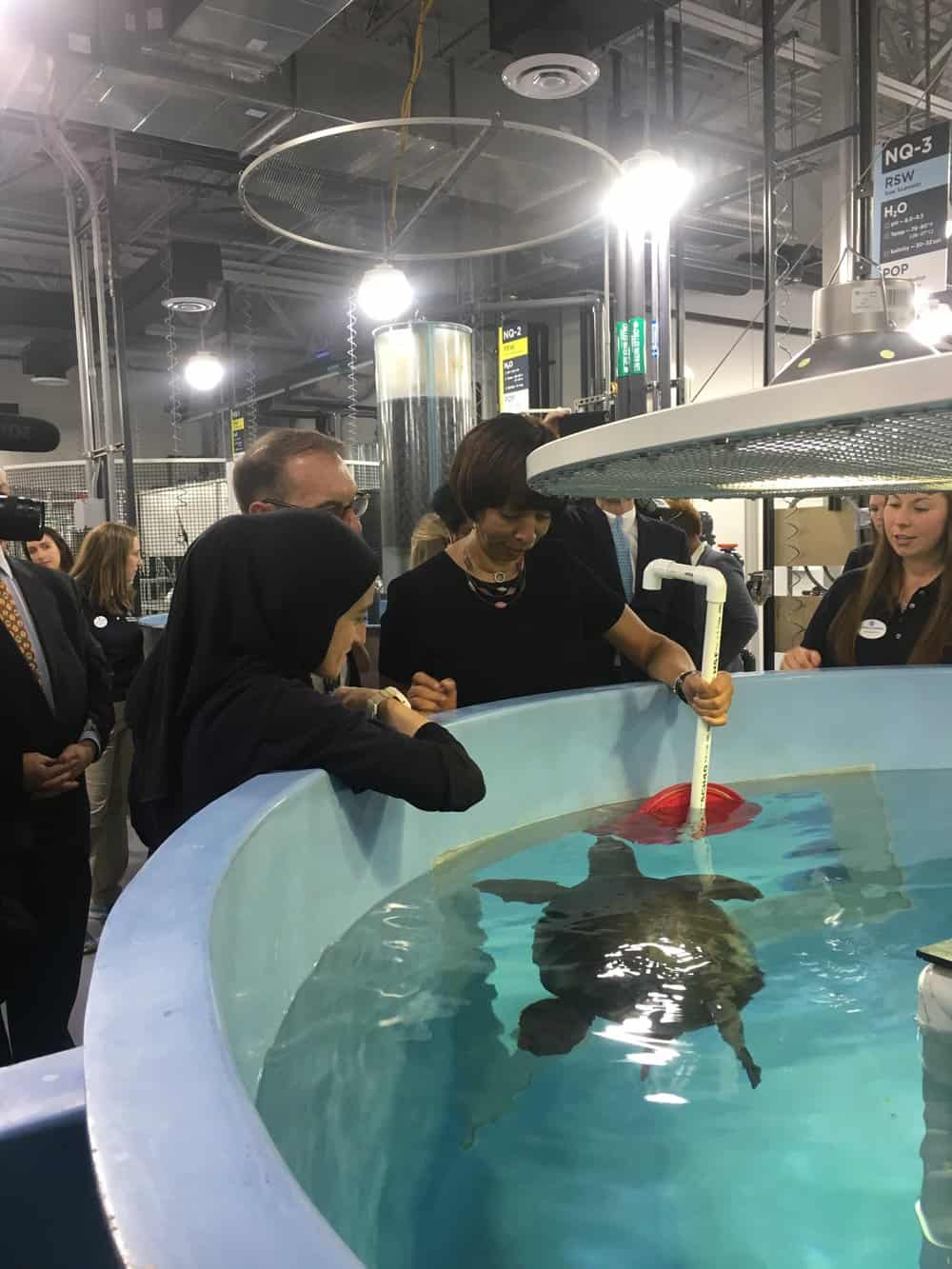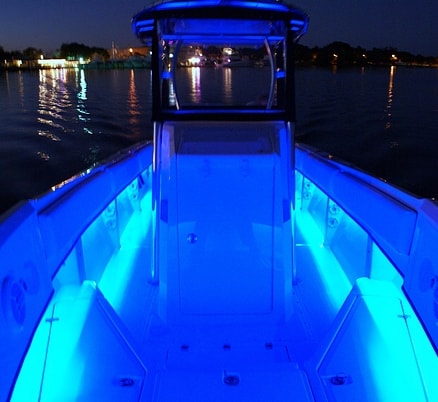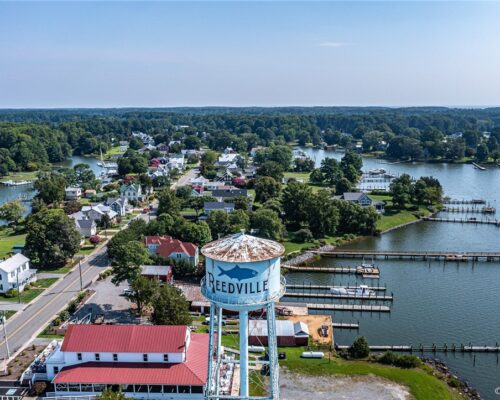On a busy Baltimore street just a couple of blocks from the Jones Falls Expressway, there is an unlikely new neighbor. The National Aquarium’s most vulnerable rescued marine animals are living on the block—inside a brand new, 56,000-square-foot facility.
Baltimore Mayor Catherine Pugh feeds Funzo, the pig-nosed turtleThe Aquarium’s Animal Care and Rescue Center officially opened Thursday with a ribbon-cutting that included Baltimore Mayor Catherine Pugh, Maryland Budget Secretary David Brinkley, and several other local leaders.
Bay Bulletin was among the first to go behind the scenes, for a VIP tour of the cutting-edge rescue center. It is home to 1,500 animals at any given time, including animals rescued from the wild, which often need to be quarantined and treated in isolation for up to three months. In its main rehabilitation space, there are 60 individual life support systems, like tanks and other habitats.
Says National Aquarium CEO John Racinelli, “Replicating nature is not easy!”
The center also serves as headquarters for the National Aquarium Animal Rescue Team, which has rehabilitated and released more than 200 animals over the last 26 years.
One of the wild animals under care is a harbor seal nicknamed Marmalade, who was stranded on the beach in Ocean City back in March. Rehabilitation Manager Kate Shaffer says staff are careful not to allow Marmalade to become too dependent on human help.
Instead of hand-feeding him fish, Shaffer says, “We’ll hide food in a bucket that has holes in it, or we’ll tuck fish [in his enclosure] so the animal has to work it out.”
Animals from the main Aquarium at the Inner Harbor will also come to stay, during times that they are “off-exhibit.” On our tour, we met a pair of dwarf caymans, and two Australian turtle species who were being “target-trained” to eat specific food that Aquarium staff offer them. Meatball, a broad-shelled snake neck turtle, and Funzo, a pig-nosed turtle, know which “target” to approach for their own personal meal. Aquarium herpetologists (turtle experts) tell that using targets threduces competition for food among the animals. Turtles can even be trained to identify different-colored targets.
The property on East Fayette Street took 18 months to renovate. It is in the heart of Baltimore’s historic Jonestown neighborhood, which is in the midst of revitalization. Encouraged by city tax credits, the nonprofit organizations Living Classrooms, Helping Up Mission, and Ronald McDonald House are also growing their presence in the neighborhood. For its part, the Aquarium is engaging youth from the neighboring City Springs Elementary/Middle School. Students helped paint the mural on the rescue center building, and they will also participate in educational programs there.
Racinelli exclaims, “These students will have the best science lab in Baltimore, maybe in all of Maryland!”

Aquarium members and other groups will also get opportunities to tour the facility with a trained guide. Leaders say the facility is the first of its kind to offer such a rare glimpse to the public. The Animal Care and Rescue Center was funded with a combination of public and private funds, including $3 million from the State of Maryland.
-Meg Walburn Viviano




